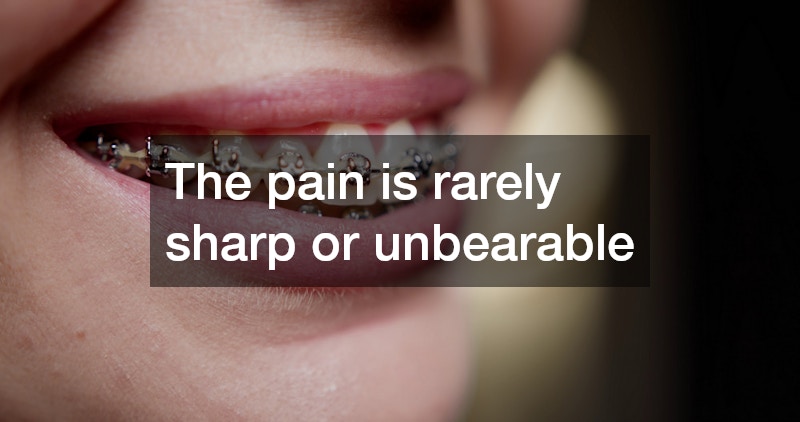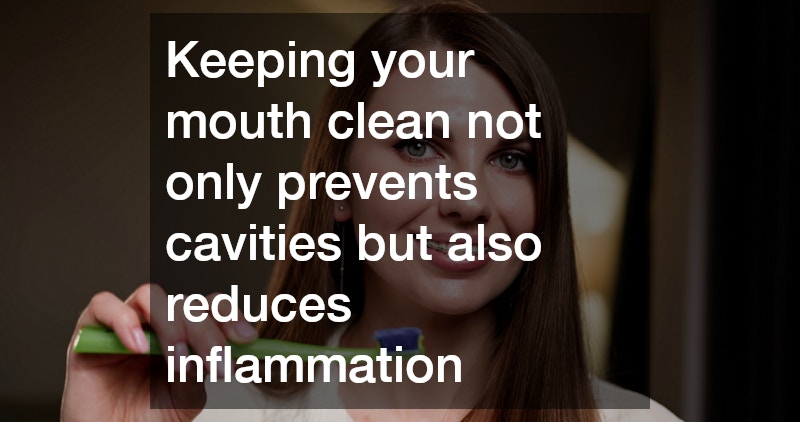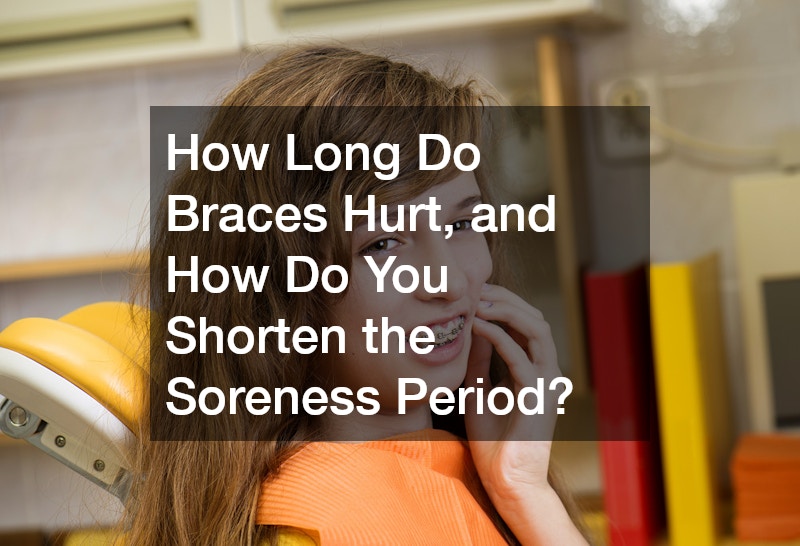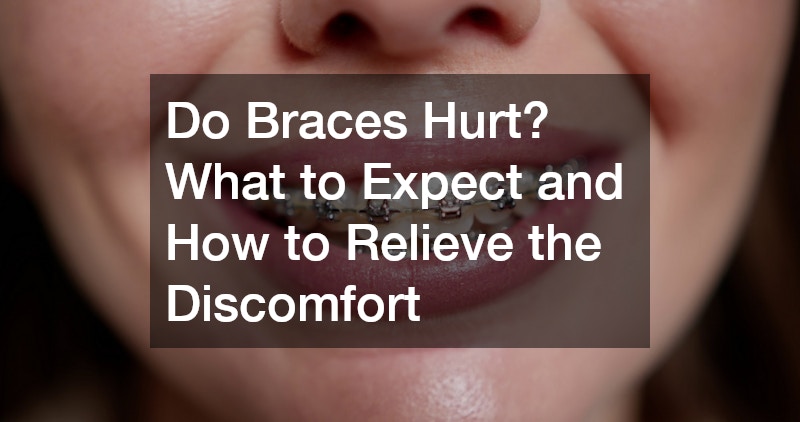
Starting orthodontic treatment can be exciting, but it also comes with a few uncertainties—especially when it comes to discomfort. Many patients notice changes in their mouth within hours of getting braces, and the first few days can feel like an adjustment period both physically and mentally.
If you’ve read up on orthodontics, you’ve probably already seen the question “do braces hurt?” come up time and time again. The short answer is yes, but the more important concern for most people is how long that soreness lasts. In this article, we’ll look at the typical pain timeline, the factors that can affect it, and practical strategies you can use to ease the discomfort more quickly.
How Long Do Braces Hurt?

Most people are relieved to know that the discomfort from braces isn’t constant—it tends to come in short, predictable bursts rather than lingering all day, every day. Understanding the typical soreness timeline can help you prepare mentally and physically for each phase.
Here’s what you can expect:
First placement (3 to 7 days)
When braces are first put on, your teeth and gums are adjusting to the gentle but constant pressure of the wires and brackets. The tenderness usually peaks within the first 24–48 hours and gradually eases over the next several days.
After adjustments (1 to 3 days)
At each tightening or wire change, that pressure is renewed. Most people feel soreness again, but it’s typically shorter-lived than the initial placement.
Occasional irritation
Brackets, wires, or bands can sometimes rub against the inside of your cheeks, lips, or tongue. This isn’t the same as tooth soreness—it’s more of a raw, irritated spot that can come and go throughout treatment.
The pain is rarely sharp or unbearable. Instead, it often feels like a deep, dull ache—similar to the achiness you get after working muscles you haven’t used in a while. This is your teeth moving into a new position, which means your braces are doing exactly what they’re supposed to do.
Why the Duration Varies from Person to Person
While there’s a general timeline, not everyone has the same experience. Factors that affect how long braces hurt include:
- Age – Younger patients often adapt faster.
- Treatment complexity – Bigger tooth movements may mean more soreness.
- Pain tolerance – Some people are more sensitive to pressure changes.
- Oral health habits – Poor hygiene can lead to gum inflammation, which adds discomfort.
This is why one person might be back to eating normally in two days, while another needs a week.
How to Make the Soreness Period Shorter

Instead of simply waiting for the discomfort to fade, you can take steps to actively shorten the time your mouth feels sore after getting braces. These small but consistent actions help your teeth and gums adapt faster while keeping irritation to a minimum.
1. Prepare Your Diet in Advance
Before your braces appointment, plan and shop for foods that are easy to chew and gentle on sensitive teeth. Having them ready means you won’t be stuck trying to figure out dinner when your mouth is most tender.
Smart soft-food choices include:
- Creamy soups (like pumpkin, tomato, or chicken broth-based soups)
- Smoothies packed with fruit and yogurt
- Greek yogurt or pudding
- Soft pasta or risotto
- Steamed or mashed vegetables (carrots, sweet potatoes, squash)
- Scrambled eggs
Avoid crusty bread, crunchy snacks, and chewy meats during the first few days. This prevents unnecessary strain on your teeth and allows them to start shifting with less resistance.
2. Keep the Blood Flowing
Movement stimulates circulation in the gums and periodontal ligaments, which helps speed up the adjustment process.
- Gently chew on soft foods rather than only eating liquids.
- Use orthodontic bite wafers for a few minutes daily to encourage blood flow and flexibility in the tissues.
- Light jaw exercises (such as slowly opening and closing your mouth) can also help loosen stiffness.
Think of it like stretching sore muscles after a workout—gentle movement helps you recover faster.
3. Alternate Cold and Warm Comfort
Cold helps numb soreness and reduce inflammation, while warmth relaxes tissues and soothes aches. You can switch between the two for maximum relief.
Cold options:
- Sip chilled water throughout the day.
- Suck on ice chips or sugar-free popsicles (don’t bite them).
Warm options:
- Rinse your mouth with warm salt water to calm gums and promote healing.
- Use a warm compress on the outside of your mouth if your jaw feels tense.
This alternating approach works because it targets both immediate pain relief (cold) and longer-term tissue relaxation (warmth).
4. Manage Irritation Before It Gets Bad
Braces can rub against the inside of your lips or cheeks, leading to small sores. The key is to act early.
- Apply orthodontic wax the moment you feel a bracket or wire rubbing.
- Keep a small container of wax in your bag or pocket so you can use it anytime.
- For severe irritation, rinse with a mild saltwater solution to prevent infection and speed up healing.
Preventing sores before they form saves you days of extra discomfort.
5. Practice Gentle Oral Hygiene
Skipping brushing might feel tempting when your teeth are sore, but it can actually make things worse. Plaque buildup leads to gum inflammation, which adds to the tenderness.
- Use a soft-bristled toothbrush and brush in slow, circular motions.
- Try orthodontic toothbrushes designed for braces—they clean effectively without extra pressure.
- Floss with waxed floss or use a water flosser for easier cleaning between wires and brackets.
Keeping your mouth clean not only prevents cavities but also reduces inflammation, helping you feel comfortable sooner.
Recovery Mindset: How to Cope When Soreness Returns
Because braces adjustments happen every few weeks, you’ll probably experience short bursts of soreness multiple times during treatment.
Here’s how to stay mentally prepared:
- Expect it – Knowing soreness is temporary makes it easier to tolerate.
- Plan light meals around adjustment days.
- Schedule big events for later in the week rather than right after an adjustment.
Foods to Avoid During Soreness
Chewing certain foods too soon can extend your soreness or even damage your braces. Skip these until you’re fully comfortable:
- Crunchy snacks like chips and pretzels
- Hard bread crusts or bagels
- Sticky candy or gum
- Raw carrots or apples (unless cut into very small pieces)
When Soreness Lasts Longer Than Usual
Occasional lingering soreness is normal, but if your discomfort doesn’t fade after 7–10 days—or it gets worse instead of better—it’s worth contacting your orthodontist. You might have:
- A wire poking your cheek or gums
- A loose bracket causing extra pressure
- Gum inflammation unrelated to tooth movement
Quick adjustments can make a big difference in comfort.
Long-Term Comfort Habits
The goal isn’t just to shorten soreness once—it’s to make your entire braces journey smoother.
- Stay hydrated – A dry mouth irritates tissues more easily.
- Chew evenly – Avoid favoring one side for long periods.
- Wear elastics as directed – Consistency helps your mouth adjust gradually instead of in big, painful shifts.
Braces Soreness vs. Other Types of Dental Pain
Braces discomfort is predictable and pressure-based—it feels different from toothache pain or sensitivity from cavities. If your pain is sharp, localized to one tooth, or keeps you awake at night, it’s worth getting checked to rule out other causes.
Final Takeaway
How long do braces hurt? Usually just a few days after getting them and 1–3 days after each adjustment. While you can’t eliminate soreness completely, you can shorten it with smart habits: soft foods, proactive irritation management, gentle oral care, and alternating cold and warm relief.
With preparation and a little patience, those short bursts of soreness will feel like small milestones on the way to a lasting, confident smile.


